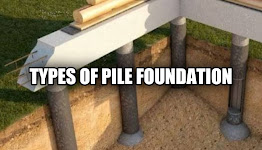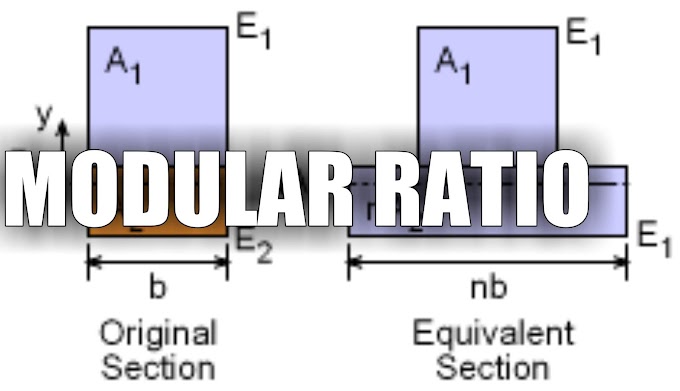When subsoil is very weak and the loads are heavy, to reduce settlements, to transfer loads through deep water or soft soil to a firm strata, to resist horizontal loads and uplift loads, in expansive soils, etc.
CLASSIFICATION OF PILES BASED ON LOAD TRANSFER
a) Friction Piles:
- Load is transferred by skin friction between soil and pile.
- Used when a hard stratum does not exists at reasonable depth.
- Also called Floating piles.
b) End Bearing Piles:
- Load is transferred to hard strata through water or soft soil, through the pile tip or bottom.
- Used when hard strata or bed rock is available at a reasonable depth.
- Also called Point bearing Piles.
c) Combined End Bearing and Friction Piles:
Load is transferred by combination of end bearing at the bottom and friction along surface of pile.
CLASSIFICATION BASED ON FUNCTION
a) Tension Piles :
- To anchor down the structure subjected to uplift forces.
- Piles are under tension.
b) Compaction Piles :
For compaction of loose granular soil.
c) Anchor Piles:
To provide anchorage against horizontal pull from sheet pile wall.
d) Fender piles and Dolphins
Sheet piles used to protect water front structures from impact of ships.
e) Batter pile:
- Piles provided at an inclination.
- To resist lateral forces or inclined forces.
CLASSIFICATION BASED ON METHOD OF INSTALLATION
a) Driven piles :
Piles are driven into soil by applying hammer blows.
b) Driven and cast-in-situ piles:
Piles are formed by driving a casing with a closed end to the soil. The casing is filled with reinforcement and concrete. The casing may or may not be withdrawn.
c) Pre-cast Driven piles:
A pre cast pile is driven into the soil.
d) Board cast-in-situ piles
Piles are formed by making a hole into the ground and then filling reinforcement and concrete.
CLASSIFICATION BASED ON DISPLACEMENT OF SOIL
a) Displacement pile:
Piles which cause lateral displacement of soil when installed.
Ex: All driven piles.
b) Non displacement piles:
No lateral displacement of soil when the pile is installed.
Ex : Bored piles.







0 Comments